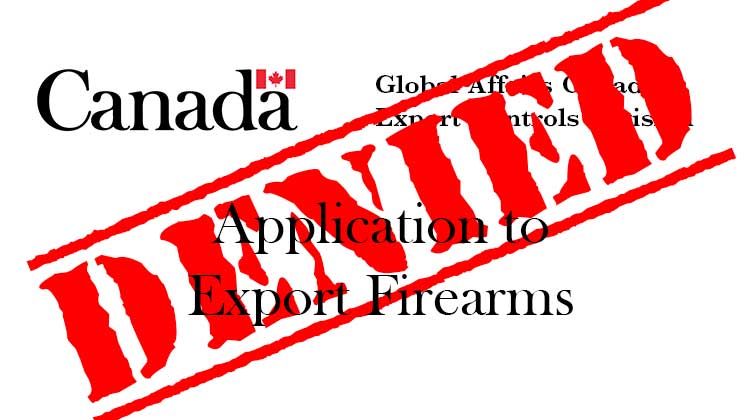Self-defence in Canada is commonly misunderstood. Many people, including our mainstream media, believe Canadians have no right to defend themselves, no matter the circumstances.
They are wrong.
The defence of person is the oldest natural right, a right that all living creatures possess. Virtually everyone, even misguided cerebral elites that believe humans only have the right to be victims, believe this obvious truth.
Here’s an example: Grab a squirrel with your bare hand. Your friends will tell you that you are an idiot – of course the squirrel is going to bite you – and you deserve it – because the squirrel is merely defending itself. DISCLAIMER: Kids, don’t try this at home!
Need another example? Try messing with a bear cub and watch what happens next. Will anyone cast recrimination on the momma bear? Nope, protecting her babies is what she does and once again, you are an idiot and completely to blame for your own stupidity. Her momma-bear right to defend herself and her cubs is absolutely proper, blameless and supersedes any foolishness written by people.
We all know these things to be true. Should they apply less to people? There are those Darwinian humans that self-righteously expound such ridiculous thought, believing themselves to be morally superior in their victimization. Most of us ignore these fools and go about our lives, content that if need dictates, we will rise in the defence of ourselves and those whose care we are responsible for.
Importantly, as a society we openly recognize this fact and provide defensive tools to those who may need protection as they carry out the state’s business, such as our police. (Remember this next time someone says handguns were only made to kill people. They were not. They were made to defend people.)
So without question, we have a natural right to defend our fragile bodies, and those of our loved ones too. If need arises, we will intuitively and unquestionably do so regardless of what statutes say. But what does it say?
Here then, are the three things you absolutely must know about self-defence laws in Canada.
Number One: Defending yourself, contrary to popular belief, is NOT against Canadian law. The Criminal Code of Canada very specifically allows self-defence and defence of property in Sections 34 and 35.
(http://laws-lois.justice.gc.ca/eng/acts/C-46/page-6.html#h-9)
Number Two: Should you find yourself in the unfortunate position where you must defend yourself with deadly force, you will be arrested and charged with a crime. Crown prosecutors seemingly don’t like Canadians doing what is required to stay alive so you absolutely will go to trial on whatever charges are laid against you.
Number Three: Unless you’ve done something terribly wrong, the odds of you being convicted are on your side. The CSSA has dealt with many of these types of cases over the years, and in only one case was the individual convicted. To re-cap:
- Yes, you will be charged with a very serious crime.
- Yes, this will be the most stressful time of your life.
- Yes, this entire process will cost you a lot of money.
-
However, at the end of it all, justice will usually prevail and you will not go to prison. More importantly, you and your loved ones will still be here.
You absolutely must understand the law and your responsibility under it once you engage the individual or individuals attempting to do harm to you and/or your loved ones.
There are things you cannot do or you will certainly go to prison. Your use of force must be “reasonable” in the totality of the circumstances and that reasonableness will be decided by a judge months or even years after the fact.
One high-profile case you’ve likely heard of is that of Ian Thomson from Port Colborne, Ontario. Multiple assailants lobbed Molotov cocktails at Thomson’s home in an attempt to burn it to the ground with Thomson inside.
Thomson, a firearms instructor, ran to his gun safe and pulled out a handgun. He loaded it and fired a couple of warning shots over the heads of the criminals intent on murdering him and, like the cowards they are, they ran for their lives.
Police arrived some time later after the fires were out and promptly charged Mr. Thomson with unsafe storage of a firearm and pointing a firearm. They eventually dropped the charge of pointing a firearm when they admitted they could not prove he pointed his gun at anyone.
The Crown prosecutor in this case, however, was so adamant that Thomson be convicted of something he attempted to convince the judge that Thomson’s gun safe was “too close” to his bedroom because of how fast Thomson was able to retrieve his firearm and defend his life. That Crown prosecutor would, presumably, prefer the burned dead body of a victim than a live defendant who did everything he could to stay alive. As bizarre as that sounds, the shameful ordeal the Crown put Ian Thomson through lasted over two and a half years.
Here, from the Criminal Code of Canada Section 34, is the self-defence provision in view:
34 (1) A person is not guilty of an offence if
- (a) they believe on reasonable grounds that force is being used against them or another person or that a threat of force is being made against them or another person;
- (b) the act that constitutes the offence is committed for the purpose of defending or protecting themselves or the other person from that use or threat of force; and
- (c) the act committed is reasonable in the circumstances.
As you can see, the law is very clear. Canadians are NOT restricted from defending themselves. In fact, the law is quite clearly on their side even if police and Crown prosecutors, like the ones in Ian Thomson’s case, are not.
It is also important to note that in Ian Thomson’s case he was never charged under this section of law. He was charged with the only thing the vindictive Crown thought they could make stick: unsafe storage of firearms. Thankfully they failed in their persecution.
One reason Thomson was not charged with anything more severe may be Section 34 (2) of the Criminal Code of Canada, which speaks to what a judge must consider when a person does use force to defend themselves.
34 (2) In determining whether the act committed is reasonable in the circumstances, the court shall consider the relevant circumstances of the person, the other parties and the act, including, but not limited to, the following factors:
- (a) the nature of the force or threat;
- (b) the extent to which the use of force was imminent and whether there were other means available to respond to the potential use of force;
- (c) the person’s role in the incident;
- (d) whether any party to the incident used or threatened to use a weapon;
- (e) the size, age, gender and physical capabilities of the parties to the incident;
- (f) the nature, duration and history of any relationship between the parties to the incident, including any prior use or threat of force and the nature of that force or threat;
- (f.1) any history of interaction or communication between the parties to the incident;
- (g) the nature and proportionality of the person’s response to the use or threat of force; and
- (h) whether the act committed was in response to a use or threat of force that the person knew was lawful.
Given the assailants were trying to burn down his home with him inside of it, Ian Thomson’s actions were entirely “reasonable” and defensible.
There are rare cases where no charges are laid but they are the exception, not the rule.
When Dievert’s Jewellers in Port Alberni was robbed at gunpoint, the owner, Dennis Galloway, retrieved his legally-owned and stored handgun from the store’s safe. He then shot one armed robber. The wounded thief’s accomplice fled for his life and was never apprehended.
The RCMP recommended Dennis Galloway be prosecuted for unsafe storage and careless use of a firearm. Thankfully, in this case, the Crown Prosecutor had more common sense than that, and Dennis never faced any criminal charges.
That case ended precisely the way it should have: with the actual criminals charged with crimes, and the innocent hero who defended himself and his wife left unmolested by the legal system.
His case is the exception, however, and that is important to understand. In almost every conceivable case, no matter how right you are, you will go to trial and tell your story to a judge.
“Better to be judged by twelve than buried by six” as the old saying goes.
However, the responsibility we accept as lawful firearms owners includes the responsibility for every single projectile that leaves the barrel of our firearms. This is fitting and proper. Our community accepts that responsibility, and we proudly rise to meet it every day.
Help Support The Great Work The CSSADoes To Protect Your Rights. DONATE HERE


Philippine Govt Imposes National Gun Ban for Election Period